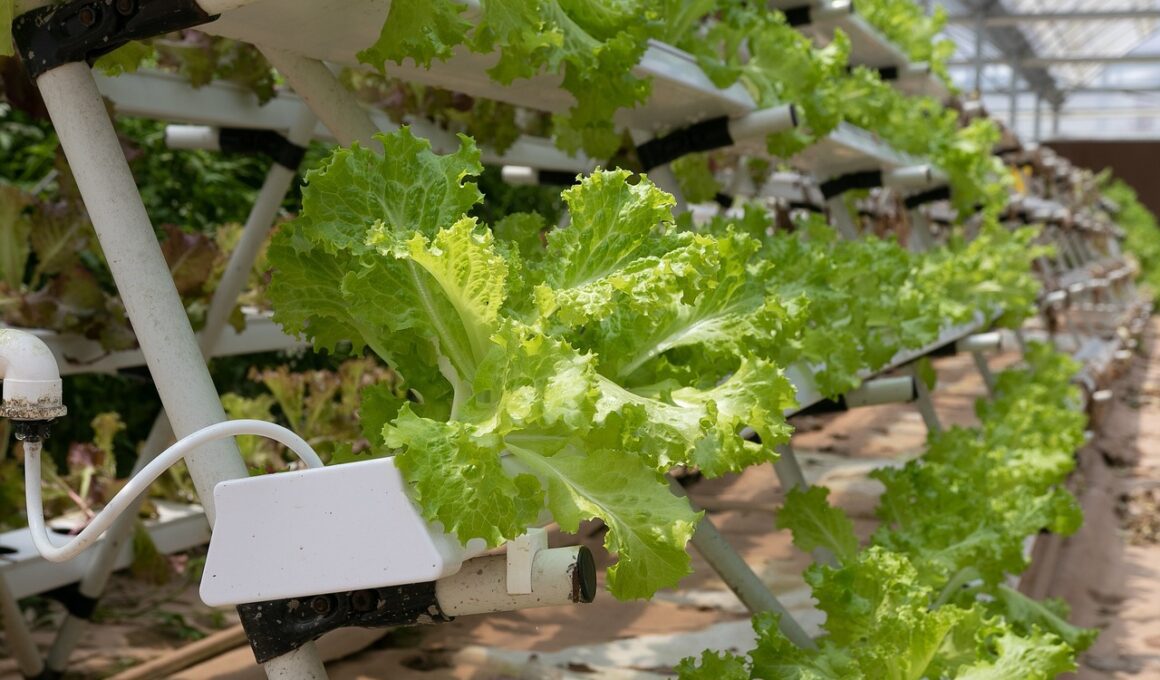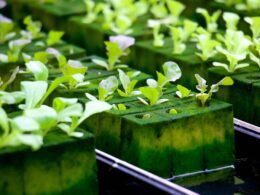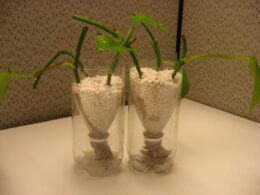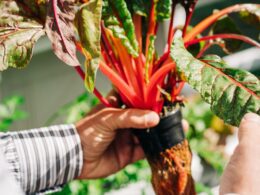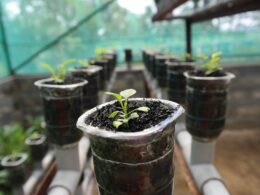Do you want to maximize the growth and yield of your hydroponic plants? One of the most crucial factors to consider is the longevity of nutrients in your hydroponic system.
Nutrients are essential to the growth and development of plants, and maintaining proper levels is crucial for optimal plant health. However, over time, nutrients can break down or become depleted, leading to nutrient deficiencies and poor plant growth.
In this article, we will explore how long nutrients last in hydroponics and the factors that affect their longevity. We will also discuss the signs of nutrient deficiency and provide tips for maintaining nutrient levels to ensure your plants thrive.
By understanding how to maximize nutrient longevity, you can ensure your hydroponic garden is healthy and productive, giving you peace of mind and a bountiful harvest.
Understanding the Role of Nutrients in Hydroponics
As you delve deeper into the intricacies of hydroponics, you’ll come to appreciate the fundamental role that nutrients play in ensuring optimal plant growth and development. Nutrient composition is a crucial component of hydroponic plant growth, as hydroponic systems rely on nutrient solutions to provide plants with the essential elements they need to thrive.
These elements include macronutrients like nitrogen, phosphorus, and potassium, as well as micronutrients like calcium, iron, and zinc. In hydroponics, the nutrient solution is circulated through the growing medium, providing plants with a constant supply of the necessary nutrients.
However, it’s important to note that these nutrients don’t last indefinitely. Over time, the nutrient solution can become depleted or imbalanced, leading to poor plant growth and development. For this reason, it’s essential to monitor and maintain the nutrient solution to ensure that plants are receiving the proper balance of nutrients.
One way to ensure that nutrients last as long as possible in hydroponics is to regularly test the nutrient solution and adjust it as needed. This can involve measuring pH levels, checking nutrient levels, and adding supplements as necessary. By staying on top of nutrient management, you can help ensure that your hydroponic plants receive the optimal balance of nutrients for healthy growth and development.
Factors Affecting Nutrient Longevity
When it comes to maintaining nutrient longevity in hydroponics, there are several factors you need to consider.
One of these factors is pH levels, which should be monitored regularly to ensure that your plants are receiving the proper nutrients.
Temperature also plays a crucial role in nutrient longevity, as extreme temperatures can cause nutrient solutions to break down more quickly.
Additionally, exposure to light can affect nutrient longevity, so it’s important to keep your nutrient solutions in a dark, cool space.
By taking these factors into account and regularly maintaining your nutrient solution, you can ensure that your plants are receiving the nutrients they need to thrive.
pH Levels
The pH levels in hydroponic systems affect how well plants absorb the necessary elements. It’s crucial to monitor and adjust the pH levels regularly to ensure optimal nutrient uptake.
When the pH levels are too high or too low, plants cannot absorb certain nutrients, leading to deficiencies and stunted growth. The importance of pH monitoring cannot be stressed enough in hydroponics.
The ideal pH range for most hydroponic plants is between 5.5 and 6.5, depending on the plant species. Adjusting pH levels can be achieved by adding pH up or pH down solutions to the nutrient reservoir.
Keeping the pH levels within the optimal range will ensure that your plants receive the necessary nutrients for healthy growth and maximum yield.
Temperature
Maintaining proper temperature is essential for ensuring healthy plant growth in hydroponic systems. The optimal range for most plants is between 65-80°F (18-27°C).
When temperatures exceed this range, plant growth may slow down or even stop altogether. On the other hand, if temperatures drop below the optimal range, the plants may become stressed and more susceptible to disease and pests.
It’s important to keep in mind the effects of extremes in temperature as well. If temperatures reach above 85°F (29°C), root rot and other diseases may occur. Additionally, high temperatures can cause nutrient imbalances, leading to stunted growth and poor plant health.
If temperatures drop below 60°F (15°C), the plants may suffer from slowed growth and nutrient uptake, making it difficult for them to reach their full potential. Therefore, it’s crucial to regulate the temperature in your hydroponic system to ensure optimal plant growth and health.
Light Exposure
Make sure you give your plants enough light exposure to help them thrive and reach their full potential, otherwise they may struggle and disappoint you. Light duration plays a crucial role in the growth and development of your plants.
Plants need a certain amount of light exposure to carry out photosynthesis, which is the process that converts light energy into the nutrients that your plants need to grow. However, too much light exposure can cause nutrient degradation, which can have negative effects on your plants.
Nutrients are essential for the growth and development of your plants, and they need to be replenished regularly. If your plants receive too much light exposure, the nutrients in the water can degrade faster, leaving your plants without the nutrients they need to grow.
Make sure to monitor the light exposure your plants receive to ensure that they are getting the right amount of light for optimal growth and nutrient uptake.
Nutrient Solution Maintenance
You need to regularly check and adjust the nutrient solution in your hydroponic system to ensure your plants are receiving the necessary nutrients for healthy growth. This involves monitoring the pH balance and nutrient levels of the solution, as both can fluctuate over time.
pH levels that are too high or too low can cause nutrient deficiencies or toxicities in your plants, which can stunt their growth or even kill them. To maintain optimal pH levels, you can use pH test strips or a pH meter to measure the solution’s acidity and adjust it accordingly with pH up or pH down solutions.
In addition to pH balance, you also need to replenish the nutrient solution regularly. Depending on the type of plants you’re growing and the size of your hydroponic system, this may need to be done daily or weekly. As your plants grow and absorb nutrients from the solution, the nutrient levels can become depleted.
To replenish the solution, you can add nutrient solution concentrate or individual nutrient salts to the water. It’s important to follow the manufacturer’s instructions for the specific type of nutrient solution you’re using, as over or under-dosing can also harm your plants.
By regularly maintaining your nutrient solution, you can ensure your hydroponic plants receive the necessary nutrients for healthy growth.
Are Hydroponic Nutrients Different from Regular Nutrients?
Are Hydroponic Nutrients Different from Regular Nutrients? One aspect that sets hydroponic nutrient lifespan apart from regular nutrients is their usage efficiency. Due to the absence of soil, hydroponic systems require carefully formulated nutrients that can be directly absorbed by plants. These specialized nutrients often have a longer lifespan than regular ones, as they are designed to provide a balanced and sustained supply of essential elements for plant growth.
Signs of Nutrient Deficiency
Identifying indicators of nutrient deficiency is crucial for ensuring optimal plant growth and health in a hydroponic system. Common deficiencies include nitrogen, phosphorus, and potassium.
If you notice that the leaves of your plants are turning yellow, it could be a sign of nitrogen deficiency. Similarly, if the leaves of your plants are turning purple, it could be a sign of phosphorus deficiency. Lastly, if the leaves of your plants are wilting and drooping, it could be a sign of potassium deficiency.
Correcting deficiencies in your hydroponic system is relatively easy. Begin by testing the pH level of your nutrient solution. If the pH level is too high or too low, it can affect the uptake of nutrients by your plants. Adjust the pH level accordingly.
Next, check the nutrient solution levels, making sure that all the necessary nutrients are present. If not, add the appropriate nutrient solution to the water.
Lastly, ensure that your plants are receiving the appropriate amount of light and water. Proper lighting and watering can help your plants absorb the necessary nutrients.
Remember that nutrient deficiencies can be detrimental to your hydroponic system. It’s crucial to monitor your plants frequently and address any issues quickly. By following these steps, you can ensure that your plants are receiving the necessary nutrients for optimal growth and health.
Tips for Maintaining Nutrient Levels
Maintaining proper nutrient levels in your hydroponic system is crucial for ensuring optimal plant growth and health. The key to maintaining the right balance of nutrients in your hydroponic system is nutrient monitoring. This involves regularly testing the nutrient solution to ensure that it contains the right amount of nutrients that your plants need.
Another important factor in maintaining nutrient levels in your hydroponic system is nutrient dosing. This involves adding the right amount of nutrients to the solution at the right time. It’s important to follow the instructions on the nutrient solution bottle and adjust the dosage according to the stage of growth of your plants. Overdosing or underdosing can lead to nutrient deficiencies or toxicities, both of which can harm your plants.
Maintaining the cleanliness of your hydroponic system is also crucial. Any buildup of algae, debris or dead roots can affect the nutrient levels in your system. Regular cleaning and maintenance of your hydroponic system will help prevent any blockages and ensure that your plants receive the right amount of nutrients they need to grow and thrive.
Conclusion: Maximizing Nutrient Longevity in Hydroponics
By taking steps to ensure the cleanliness and proper dosing of your hydroponic system, you can give your plants the best chance to thrive and produce healthy, nutrient-rich crops.
One important factor in maintaining nutrient levels is proper storage. Make sure to store your hydroponic nutrients in a cool, dry place away from direct sunlight. This will prevent nutrient degradation and extend their lifespan.
Another way to prevent nutrient degradation is to mix only the amount of nutrients needed for each feeding. This will prevent excess nutrients from sitting in the solution and breaking down over time.
Additionally, make sure to replace your nutrient solution every 1-2 weeks, depending on the specific nutrient requirements of your plants. This will ensure that your plants are receiving the proper amount of nutrients and prevent any buildup of harmful chemicals in the solution.
Lastly, keep a close eye on the pH levels of your nutrient solution. If the pH is too high or too low, it can cause nutrient lockout, where your plants will not be able to absorb the nutrients they need. This can lead to stunted growth and poor crop yields. Regularly testing and adjusting the pH levels of your nutrient solution will ensure that your plants are able to absorb the nutrients they need to thrive.
By following these steps, you can maximize the longevity of your hydroponic nutrients and give your plants the best chance for success.
Frequently Asked Questions
What are the ideal nutrient levels for different hydroponic plants?
When it comes to hydroponic gardening, understanding the nutrient requirements and ideal levels for different plants is crucial for achieving optimal growth rates.
Nutrient requirements can vary depending on the type of plant, its growth stage, and the specific hydroponic system being used.
Factors such as pH levels, temperature, and lighting can also affect nutrient uptake, which is why it’s important to monitor these variables closely.
For example, lettuce plants generally require lower nutrient levels than tomatoes or peppers, and leafy greens tend to prefer a slightly more acidic pH than fruiting plants.
By experimenting with different nutrient levels and keeping an eye on environmental factors, you can help ensure your hydroponic plants are thriving and producing healthy, nutrient-rich crops.
How often should nutrient solution be changed in a hydroponic system?
To ensure the health and growth of your hydroponic plants, it’s important to monitor the pH levels of your nutrient solution regularly. This is because pH levels can fluctuate over time and affect the uptake of nutrients by your plants.
Additionally, it’s recommended to change your nutrient solution every two to three weeks to prevent the buildup of harmful bacteria and algae. Before adding new nutrient solution, it’s important to sterilize your equipment to prevent contamination.
By monitoring pH levels and regularly changing your nutrient solution, you can ensure a safe and healthy environment for your hydroponic plants to thrive.
Can regular tap water be used as a nutrient solution in hydroponics?
If you’re considering using regular tap water as a nutrient solution in your hydroponic system, it’s important to consider water quality and pH levels. Tap water can contain impurities and minerals that may affect the growth of your plants.
It’s recommended to test the pH levels of your tap water and adjust it accordingly to ensure optimal plant growth. Additionally, using a water filtration system can help remove any harmful substances in the water.
Remember, the quality of your nutrient solution is crucial for the health and growth of your plants, so it’s important to take the necessary steps to ensure it’s of the highest quality possible.
What are the most common mistakes that can lead to nutrient deficiencies in hydroponics?
If you’re experiencing nutrient deficiencies in your hydroponic system, it’s likely due to a few common mistakes. One of the biggest is failing to properly balance the pH of your nutrient solution.
If the pH is too high or too low, your plants won’t be able to absorb the nutrients they need. Another mistake is not providing enough nutrients for your plants to absorb.
This can happen if you’re not using the right type of nutrient solution, or if you’re not changing it frequently enough. To avoid these issues, make sure you’re properly balancing the pH of your nutrient solution and providing enough nutrients for your plants to absorb.
How do different types of hydroponic systems impact nutrient longevity?
When it comes to hydroponic systems, there are different types that can impact nutrient longevity. A comparison of these systems can help you determine which one is right for you.
Nutrient absorption is the key factor to consider when choosing a system. For example, in a deep water culture system, the roots are completely submerged in nutrient-rich water, which means that the nutrients are constantly available to the plants.
In contrast, an ebb and flow system only floods the roots periodically, which can lead to nutrient depletion. Ultimately, choosing the right system for your hydroponic garden will help ensure that your plants are getting the nutrients they need to thrive.
Conclusion
Congratulations! You now know the importance of nutrients in hydroponics and how to maximize their longevity.
Remember, maintaining proper pH levels and monitoring nutrient levels regularly are crucial for healthy plant growth. Keep an eye out for signs of nutrient deficiency, such as yellowing leaves or stunted growth, and adjust accordingly.
To ensure your nutrient solution lasts as long as possible, consider using high-quality nutrients and investing in a water filtration system.
Regularly cleaning your hydroponic system and replacing nutrient solutions every few weeks can also help maintain healthy nutrient levels. With these tips, you can enjoy thriving plants and a bountiful harvest in your hydroponic garden.





